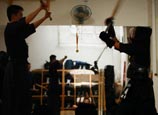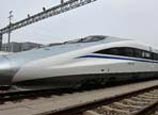
The Haining Jianshan New Area Commission, operator of the two companies, has planned many detailed infrastructure projects, such as the building of houses for rent, kindergartens and schools, said Xie Yong, director with the commission.
"So far, we have planned kindergartens, primary schools and middle schools. The next step is to have more such schools and build more service facilities, as well as set up more bus routes in the east and west side of the area," Xie said.
In any case, with the rapid economic development over the past years, there is little land available for building more factories and plants.
The Haining government began to reclaim land from the north bank of the Qiantang River in 1997 and established the Jianshan area on a 42 square kilometer plot in 2005.
The local government has given subsidies to companies to locate in the area, especially those involved in eco-friendly industries, Xie said.
Both Zhang and Qian said they will continue investing in research and development to upgrade products, such as making biodegradable plastics or devices that can deal with car emissions.
While new industries in Haining are on the rise, traditional businesses are still thriving. The leather industry is now worth more than 18 billion yuan a year and a leather fashion week and design contests are held every year to showcase the work of local designers.
The city can also boast one of the most spectacular tidal bores in the world, on the Qiantang River near Hangzhou. Up to meters high and traveling at up to 64 kilometers per hour up the river, tourists come from around the world to see the surging power of the sea.
Viewing the tidal bore is part of the Mid-Autumn Festival celebrations in the area where the sound of the surge has been compared to the sound of a thousand galloping horses.
Now Haining's green industries are creating their very own surge.
 |
















 A growing thirst for water safety
A growing thirst for water safety


![]()
